The ledger must be decentralized, and the assets must be centralized.
Written by: Nathan Ma, Co-Founder & Chairman of DMZ Finance
Core Points:
The explosion of stablecoins; 2025 is the Skype moment for blockchain finance.
The efforts to build Web3.0 have failed, resulting in the creation of Finance3.0.
RWA assets on-chain: the ledger must be decentralized, and the assets must be centralized.
The Hong Kong stablecoin battle: challenges from emerging stablecoins.
RWA opportunities in the Middle East: a world-class digital asset center.
The RWA linkage between mainland China/Hong Kong and the Middle East.
As one of the core applications of blockchain finance, stablecoins are set to experience explosive growth in 2025.
According to data from RWA.xyz, by July 2025, the global stablecoin market size has surpassed $250 billion. In the past 12 months, the number of active addresses for stablecoins has exceeded 240 million, with payment transactions reaching 1.4 billion and a total transaction volume of up to $6.7 trillion. In 2024, the annual transaction volume of stablecoins has already surpassed the combined transaction volume of Visa and MasterCard, making it one of the most important payment vehicles globally.
According to the U.S. Treasury Borrowing Advisory Committee (TBAC), the market capitalization of stablecoins is expected to reach $2 trillion by 2028; if interest-bearing stablecoins are included, the overall scale may reach $3.5 to $4 trillion.
2025 is the Skype moment for blockchain finance
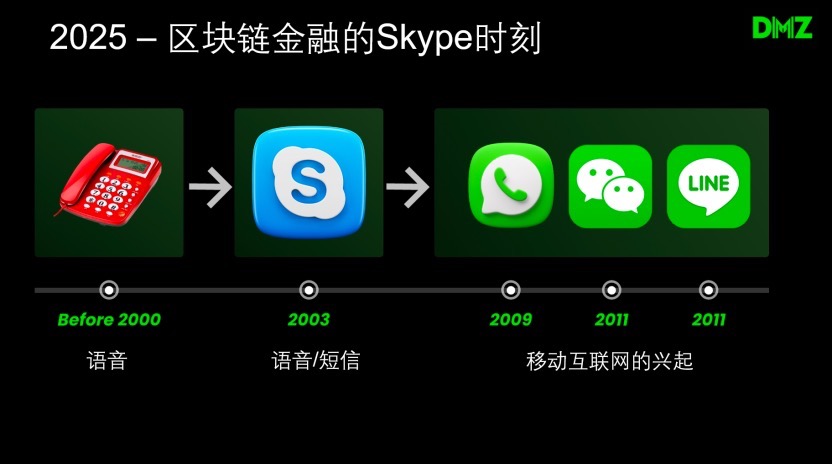
Before the birth of Skype in 2003, making international long-distance calls was both expensive and inconvenient. The emergence of Skype completely disrupted traditional telephone networks, enabling almost free global voice and text transmission in real-time. And this was just the beginning of the transformation.
In 2009, WhatsApp was launched, and in 2011, WeChat was introduced, with the rise of WeChat Pay and Alipay officially opening the curtain on internet finance.
Stablecoins, as one of the most representative applications in blockchain finance, were initially invented as a medium for on-chain transactions. However, with geopolitical sanctions, global inflation, and international turmoil, stablecoins have gradually evolved into a strong challenger to the traditional international payment system, SWIFT.
This challenge stems from the efficiency and cost advantages brought by its native technology: traditional SWIFT cross-border transfers take an average of about 5 business days and cost around 2-3%; whereas blockchain-based stablecoin payments achieve global real-time settlement 24/7. For example, on the Solana chain, the average transaction fee can be as low as $0.00025, showcasing significant cost advantages.
Just as internet communication replaced telephone networks in 2003, today blockchain networks are replacing traditional interbank payment networks; this trend is irreversible, and this transformation is just beginning.
Efforts to build Web3.0 have failed, resulting in the creation of Finance3.0
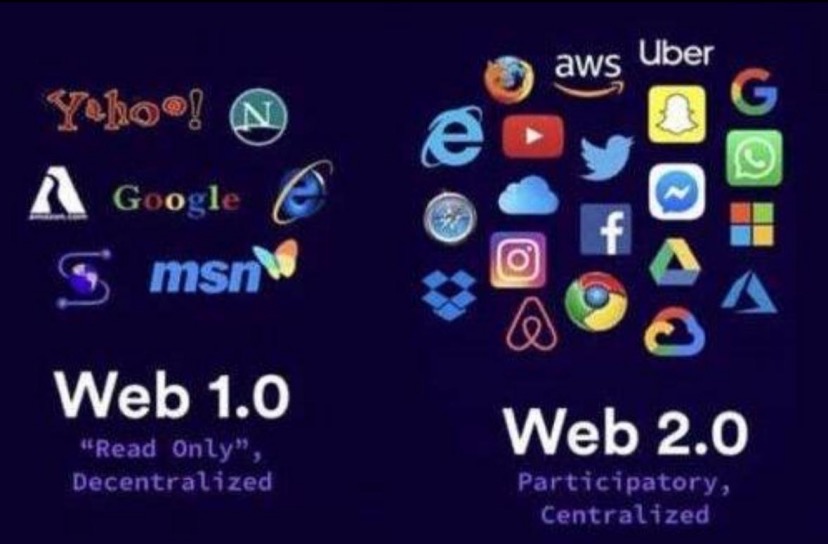
The true dividing line between Web2.0 and Web1.0 is not the upgrade of interaction methods, but the comprehensive explosion of applications. Search, video, payment, e-commerce, gaming, social media—everything we take for granted in today's internet experience emerged during the Web2.0 era. The driving force behind this was not hollow concepts, but the leap in "chip performance and network bandwidth," which directly ignited an unprecedented application revolution.
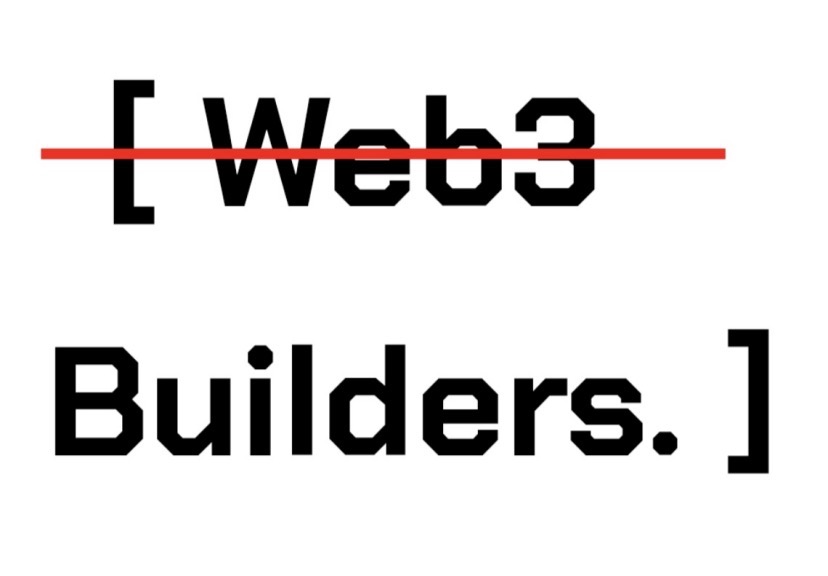
If we use the explosion of applications as a standard for generational division, the so-called "Web3.0" has not yet seen a true large-scale application explosion, primarily due to innovations in underlying infrastructure—such as distributed ledgers and cryptocurrency technology. Simply distinguishing generations based on the functional aspects of "centralization" and "decentralization" is clearly not persuasive enough.
From this perspective, the construction of Web3.0 has not succeeded; what has been built is "Finance 3.0": on the basis of decentralized networks, using cryptocurrencies as a medium to bring traditional financial functions such as exchanges, derivatives, leverage, and lending onto the chain.
Finance 1.0——Traditional financial system
Finance 2.0——Internet finance
Finance 3.0——Blockchain finance
The most important application in Finance 3.0 is stablecoins built on decentralized networks, which are profoundly reshaping the global payment and settlement network. The degree of innovation's disruption can be compared to the replacement of horse-drawn carriages by trains, bringing a qualitative leap in efficiency and cost.
RWA assets on-chain: the ledger must be decentralized, and the assets must be centralized
Unlike Finance 2.0, blockchain networks have been designed from the beginning as a foundational platform for tradable assets, initially supporting crypto-native assets like Bitcoin (BTC) and Ethereum (ETH). Now, the tokenization of real-world assets is accelerating. Tokenized U.S. stocks, U.S. Treasury bonds, gold, real estate, and more are all going on-chain. This not only means that assets can be transferred in real-time but can also be used as collateral for lending and DeFi, significantly enhancing the liquidity and yield potential of real assets. Boston Consulting Group (BCG) predicts that by 2030, the market size of tokenized RWA assets is expected to reach $16 trillion.
In the process of RWA on-chain, there are two core issues: first, the choice of ledger (blockchain)—public chain or consortium chain, and what level of decentralization is appropriate? Second, the selection of priority asset types for going on-chain, which assets are more suitable for being the first to go on-chain? These two issues directly affect the success and scale of asset tokenization.
My view is: the ledger must be decentralized, while the assets must be centralized.
1. Ledger choice: RWA should prioritize decentralized public chains
In RWA tokenization practices, it is recommended to prioritize decentralized public chains—such as Ethereum, Solana, or exchange ecosystem public chains like BNB Chain, Base, etc. For example, the U.S. Treasury bond token (T-Bill Token) currently has three representative products: BUIDL, launched by BlackRock in collaboration with Securitize; BENJI, from Franklin Templeton; and QCDT, launched by QNB in collaboration with DMZ Finance—all issued on public chains.
The core reason lies in their two main application scenarios:
1) Stablecoin reserve assets
BUIDL has become the main underlying asset for the yield-bearing stablecoin USDtb (Ethena), with USDtb holdings accounting for over 70% of BUIDL's issuance at its peak.
Circle has reached an agreement with BlackRock to exchange 90% of the short-term Treasury positions in USDC reserves for BUIDL, enhancing on-chain transparency and yield.
2) Exchange margin collateral
There are precedents in traditional finance: at the Chicago Mercantile Exchange (CME), over 50% of the margin is U.S. Treasury bonds.
The blockchain world is replicating this model: OKX and Standard Chartered Bank launched a pilot project called "Collateral Mirroring" in April 2025, allowing institutional clients to use crypto assets and tokenized money market funds (like Franklin Templeton's BENJI) as trading collateral. It is reported that exchanges like Binance and Bybit will soon launch similar programs.
If today a Treasury bond token is issued and goes on-chain but chooses a consortium chain or private chain, it will be difficult to participate in the two most critical application scenarios mentioned above, which will severely undermine the significance and value of going on-chain itself. However, from the current practices of financial institutions, there is still a general tendency to choose consortium chains or private chains in the initial stages, primarily due to considerations of security and market control. The long-term effects of this choice in the market remain to be observed.
2. Asset choice: must be centralized.
The higher the degree of centralization, the more mature the asset's standardization, rating system, and secondary liquidity. Based on the degree of centralization:
Treasury bonds / Gold > Stocks > Large bank deposits > Private debt > Real estate > Charging piles > Grapes
The centralization of assets offsets the decentralized attributes of blockchain networks; only by combining the two can liquidity be released globally. Going on-chain with charging piles does not solve their liquidity issues; going on-chain with grapes seems more like conceptual speculation, making it difficult to form a deep market.
The Hong Kong stablecoin battle: opportunities and challenges faced by emerging stablecoins
Recently, as countries and regions represented by the U.S. and Hong Kong gradually clarify their legislation, the heat of the stablecoin market has reached an unprecedented high.
Functionally, stablecoins can be roughly divided into three categories: transaction-type stablecoins, payment-type stablecoins, and yield-type stablecoins. Although there is some overlap among the three, their focuses differ.
Among them, the success of transaction-type stablecoins highly depends on the support of leading exchanges, and the cost of gaining that support is often the concession of significant profits—such as the relationship between Coinbase and USDC; another way is direct support from exchanges, such as Binance's deep integration and leadership with FDUSD.
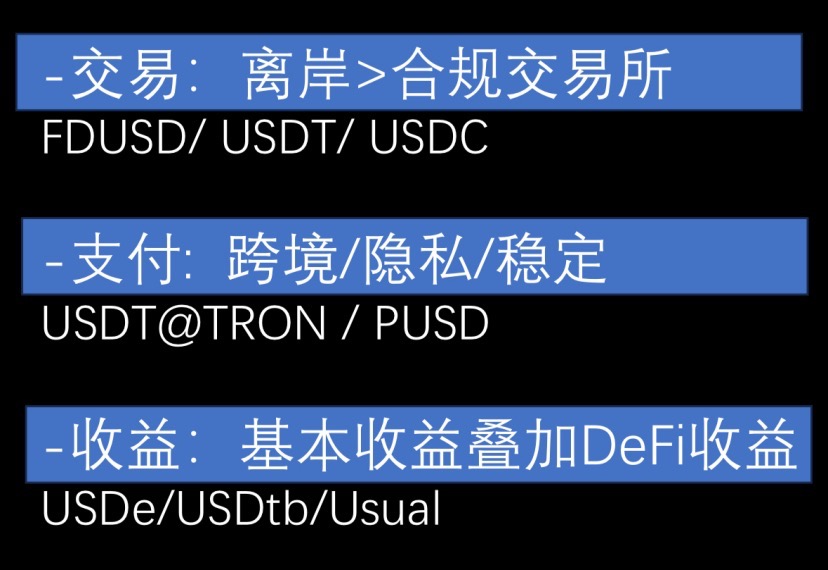
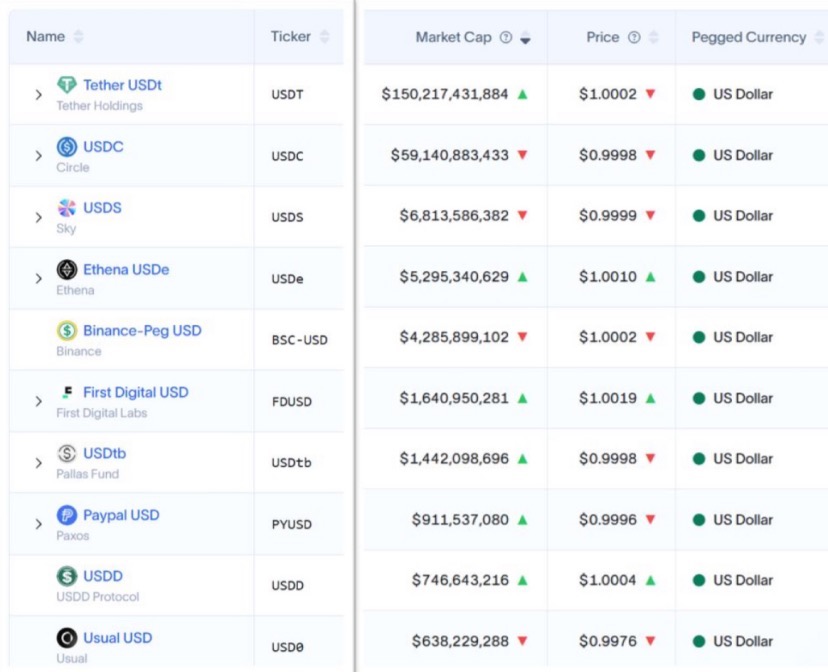
After USDT/UADC, the stablecoins that have formed a certain scale are mainly yield-type stablecoins, such as Ethena's USDe and USDtb, whose core mechanism is to pass on profits to users through yield structures (such as funding rates or protocol income), thereby enhancing the attractiveness of holding the coins.
Emerging "compliant stablecoins" are primarily positioned around payment scenarios, with issuers often being payment giants (such as PayPal and Visa) or cross-border e-commerce platforms (such as Amazon and JD.com). These stablecoins are typically rooted in their existing global payment businesses, adopting a "To B first, then To C" promotional path.
During my recent research in Hong Kong, I engaged in in-depth discussions with several institutions and learned that over a hundred organizations and companies are applying or preparing to apply for Hong Kong stablecoin licenses, marking the beginning of the "hundred stablecoin battle" in Hong Kong. However, this competition faces numerous challenges:
1. No yield, difficult to hold: According to regulatory frameworks in the U.S. and Hong Kong, compliant stablecoins cannot directly pay interest to holders, which diminishes the incentive for users to hold them beyond payments, affecting their ability to retain funds.
2. Difficulty entering trading scenarios, high exchange thresholds: Although popular compliant stablecoin issuers are actively engaging with mainstream exchanges, the scarcity of "entry tickets" from leading exchanges makes it quite challenging to actually go live.
3. Numerous barriers in payment scenarios, difficult to break through: Stablecoins issued by major e-commerce platforms often serve their own ecosystems, making cross-platform interoperability difficult. It is hard to imagine Amazon supporting JD.com's stablecoin, and vice versa.
To address these pain points, innovative companies in the market are developing solutions focused on settlement and yield integration between stablecoins. Among them, infrastructure companies supported by large banks have inherent advantages, including: Partior, incubated by the Monetary Authority of Singapore (MAS), focusing on cross-border payments with stablecoins, supported by DBS, J.P. Morgan, and ENBD; Taurus, focusing on tokenization in the European market, supported by Credit Suisse and Deutsche Bank; and DMZ Finance, an RWA infrastructure service provider supported by QNB and Standard Chartered Bank.
These institutions have all been selected as key participants in the QFC Digital Asset Lab, led by the Central Bank of Qatar, and are seen as crucial players in building the next-generation stablecoin infrastructure.
RWA Opportunities in the Middle East: A World-Class Digital Asset Center
To measure the potential for RWA development in a region, three dimensions can be evaluated: regulation, ecosystem, and market.
Regulatory Dimension: As early as 2018, the Abu Dhabi Global Market (ADGM) (FSRA) launched one of the world's first widely recognized regulatory frameworks for crypto assets, including comprehensive regulations for exchanges, custodians, and issuance mechanisms. VARA was established in 2022 as the virtual asset regulatory authority in Dubai, apart from DIFC, and later signed a cooperation agreement with SCA in 2024 to provide cross-emirate regulatory pathways for operating entities. Currently, Binance, OKX, and Deribit have obtained official licenses from Dubai VARA, and Bybit has also secured a temporary license.
In July 2025, Dubai's regulatory DFSA officially approved the first tokenized money market fund - QCDT. This fund is registered in DIFC and launched in collaboration between QNB and DMZ Finance, with both the fund and token custody held at Standard Chartered Bank (Dubai). QCDT combines the strengths of Dubai and Qatar, two major financial centers in the Middle East, and is positioned to radiate to global markets.
Ecosystem Dimension: Data shows that the scale of crypto assets held by UAE sovereign wealth funds has exceeded $40 billion. In March of this year, MGX, a subsidiary of the Abu Dhabi sovereign fund, invested $2 billion in Binance, becoming the first sovereign fund to acquire a stake in a top cryptocurrency exchange. Meanwhile, the Middle East is investing hundreds of billions of dollars to build the largest AI computing cluster outside the U.S. In Dubai, numerous top wealth management firms, hedge funds, quantitative trading institutions, private equity funds, and family offices are actively engaging in the crypto asset space.
Dubai is hailed as the world's third-largest financial center, with the Dubai International Financial Centre (DIFC) housing over 2,600 financial institutions and companies. By the end of 2024, this includes:
Over 260 banks and capital market institutions;
Over 410 wealth management and asset management companies, including 75 hedge funds;
Over 125 insurance and reinsurance companies;
Over 800 family businesses;
In terms of Chinese financial institutions, DIFC is the only cluster for Chinese financial enterprises in the UAE, with the five largest Chinese banks accounting for over 30% of the total assets in DIFC's banking and capital markets, and about 30% of the Chinese enterprises based there being Fortune 500 companies.
Market Dimension: Data indicates that by 2025, approximately 9,800 millionaires are expected to move to the UAE, making it the country that attracts the most high-net-worth individuals globally, surpassing the U.S. and the U.K. The penetration rate of crypto assets in the UAE is expected to reach 39% by 2025, far exceeding the global average of 6.8%.
Dubai, Abu Dhabi, and Doha have the following advantages:
Zero personal income tax and capital gains tax, with very low corporate tax rates;
Global market connectivity: Dubai's "ten-year golden visa" policy has low thresholds, and the time difference with Hong Kong, Singapore, and mainland China is only 4 hours, while it is 3 hours and 2 hours with London and Switzerland, respectively, forming an ideal global market crossroad.
Therefore, the RWA opportunities in the Middle East are far from the traditional notion of a "rich market"; they represent a compliant market aimed at global institutions and high-net-worth investors. The compliance of RWA projects in the Middle East will gain high recognition in global capital markets.
The three elements of regulation, ecosystem, and market collectively drive the Middle East to become an important center for crypto assets globally.
RWA Linkage between the Middle East and Mainland China/Hong Kong
The Middle East is the best market for offshore RMB stablecoins, with annual trade between mainland China, Hong Kong, and the UAE exceeding $110 billion, and over $30 billion with Qatar. If part of this trade volume can be settled using offshore RMB stablecoins issued in Hong Kong, it will greatly activate the vitality of RWA and the Chinese stablecoin market.
Additionally, high-quality domestic assets can also consider leveraging the Middle East's compliance framework to showcase and raise funds on this world-class digital asset center stage, which will significantly aid and enhance actual business and brand value.
As the ideals of Web3.0 face obstacles in practical implementation, Finance3.0 has already made substantial breakthroughs in core financial scenarios such as payments, settlements, and trading collateral through stablecoins and asset tokenization. Its underlying logic is clear: the ledger must be decentralized to gain global trust; assets must be centralized to connect with real value.
In the current context of increasingly clear global regulations and traditional financial institutions accelerating their entry, the Middle East is rapidly becoming a key hub connecting new financial infrastructure with global capital flows. It possesses both a forward-looking institutional framework and the capability for global liquidity and resource allocation, coupled with economic and trade linkages with mainland China and Hong Kong, providing scalable real soil for stablecoins and RWA.
We are standing at the starting point of a reshaped global financial landscape, and the new era of stablecoins and RWA has already begun.
免责声明:本文章仅代表作者个人观点,不代表本平台的立场和观点。本文章仅供信息分享,不构成对任何人的任何投资建议。用户与作者之间的任何争议,与本平台无关。如网页中刊载的文章或图片涉及侵权,请提供相关的权利证明和身份证明发送邮件到support@aicoin.com,本平台相关工作人员将会进行核查。




